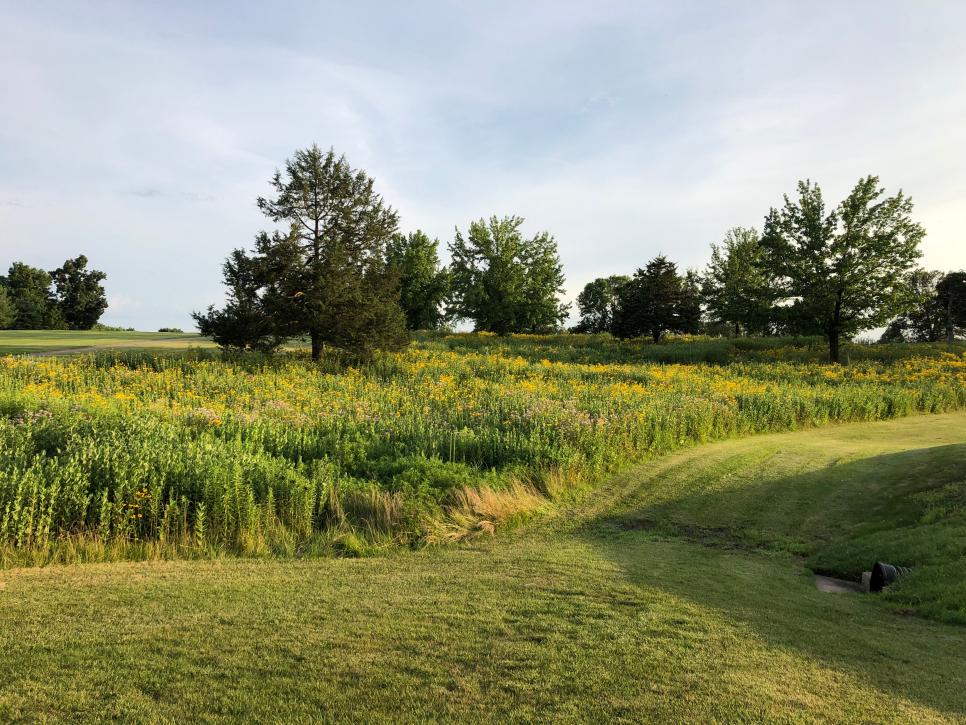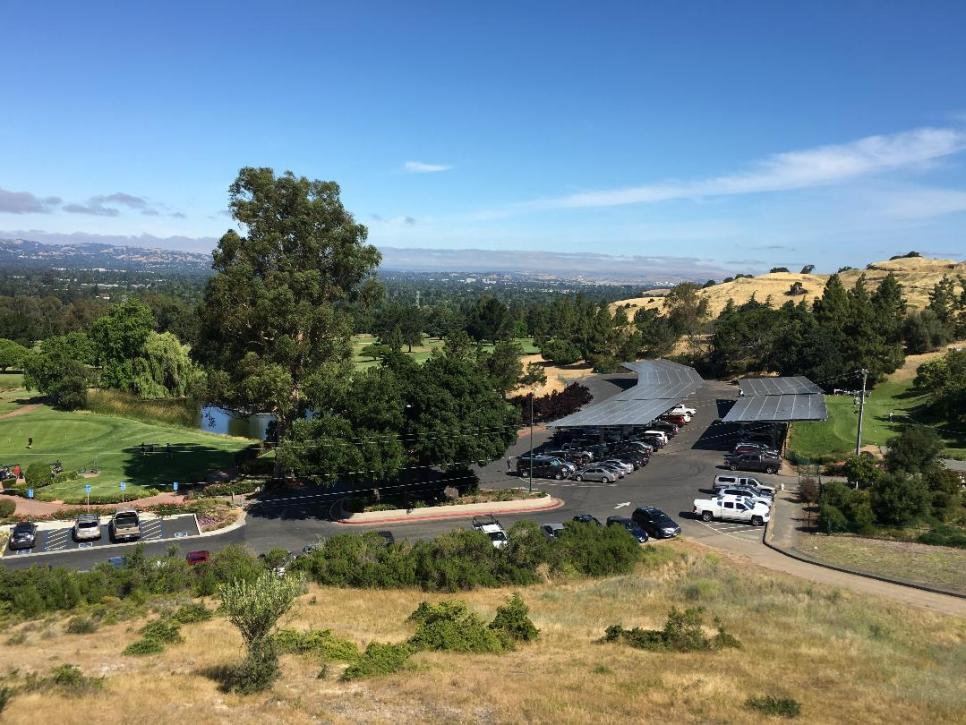Courses
Environmental Leaders in Golf Awards: A resounding message in support of golf course superintendents
Sometimes the best of intentions results in unintended consequences. That seems to be true in the case of the 2019 Environmental Leaders in Golf Awards, the annual celebration of golf sustainability co-sponsored by the Golf Course Superintendents Association of America and Golf Digest.
From its introduction in 1993 until 2017, the Environmental Leaders in Golf Awards was a hard get. A superintendent had to demonstrate outstanding achievement in nine different aspects of stewardship, ranging from water conservation, pollution prevention, wildlife habitat, integrated pest management and even community leadership. Participation over the years was vigorous, enough to designate winners in Public, Private, Resort and International categories, but the number of entries was never as extensive as one might expect for an international award.
In 2018, the system was changed. The nine areas of expertise were combined into four concise categories of specific environmental focus: Natural Resource Conservation, Healthy Land Stewardship, Communication & Outreach and Innovative Conservation. A superintendent could compete for any or all of the categories. But no longer does an entrant have to be an All-Purpose back. A defensive star doesn’t need demonstrate offensive skills. A special teams standout can be recognized solely for those talents alone.
The result of the 2018 change was a slight uptick in the total number of entries, in part because the entry form was not nearly as tedious as before, probably a fourth of the paperwork, and entrants could supplement it with photographs, cell phone videos and PowerPoint presentations.
But the number of entries was down in 2019, lower than in 2018. Which, frankly, is inexplicable. Is it because there’s no financial reward involved? Is it a case of general apathy in the profession? Or is it just because there really aren’t that many sustainable golf courses out there?
I know the last statement to be false, because over the years I’ve visited countless golf course superintendents whose operations are stellar examples of all sorts of efforts in environmental compatibility. Part of me feels like I should nominate those people myself, or urge them to participate, but in my role as one of the ELGA judges, I feel duty-bound to remain neutral.
But I’m a firm believer in the long-term objective of the Environment Leaders Awards, which is to not only recognize worthy accomplishments but also to serve as a method of informing the general public that golf courses are beneficial to the communities they serve. (That’s a message that often gets drowned out by sensationalist headlines of yet another lawsuit claiming some poor victim was poisoned by a golf course chemical.)
My disappointment in the low number of entries in 2019 should not reflect adversely in any way on this year’s four winning superintendents: Isaac Breuer, of Gustin Golf Course in Columbia, Mo.; Gary Ingram, Certified Golf Course Superintendent at Metropolitan Golf Links in Oakland, Calif.; Jay Neunsinger, of Boundary Oaks Golf Course in Walnut Creek, Calif.; and Matt Gourlay, CGCS and Master Greenkeeper of Colbert Hills Golf Course in Manhattan, Kansas. All are being recognized for outstanding achievements and deservedly so.
But Ingram and Gourlay won ELGAs last year as well, in different categories. (Winners are prohibited from entering the same category again for five years.) Not that there’s anything wrong with that, but it’s as if just 10 guys showed up every year to play The Masters. I think even the winners want a healthy field of competition for the ELGA. It makes their triumphs even sweeter.
If you are a superintendent reading this, or a course architect, or a golfer who admires the course most frequently played, I urge you to spread the word about the annual Environmental Leaders in Golf Awards and encourage as many GCSAA members as possible to enter in one or more of the categories. Flood our mailboxes with entries. Make it harder for us judges to review the entries, score the several categories and tabulate the winners. The more the participation, the more the message resounds—golf course superintendents are environmentalists, too, and genuine stewards of the game.
Here’s a closer look at the 2019 ELGA winners, each of whom will be recognized at the 2020 Golf Industry Show in Orlando later this month.
Communications & Outreach Award
At the University of Missouri’s Gustin Golf Course, superintendent Isaac Breuer has become something of a tour guide over the past five years.
“I’ve given tours to lots of groups, master gardeners, master naturalists, members of Missouri Native Plant Society, people from the state department of conservation, 4H members, Boys and Girls Club of Columbia, the Columbia Golf Foundation, some 50 local science teachers and many more,” he says.
What Breuer is showcasing are his pollinator plots (below), out-of-play areas that over the past two and a half decades have been converted not just to native areas, but to native plants that attract honey bees, birds and butterflies. Within those areas are 26 birdhouses, which by Breuer’s count have thus far fledged 3,007 bluebirds. He has four bee hives on the course and performed his first honey harvest in 2019, selling enough honey to fund the purchase of more bee supplies.

His message to those who take his golf course tour is one of encouragement. “I tell them how we’ve accomplished everything they’re seeing, and tell them how they can do this at their own golf course or in their own backyard. Quit mowing an area and turn it into a pollinator plot.”
Breuer also provides real-time training: “We’ve had local kids the come out and seed our pollinator plots in February. We’ve taught students wildflower identification and show them how to make seed balls so they can seed an area at their house.”
The University has promoted his efforts on its various social media platforms and Breuer has been featured in Missouri Conservationist magazine. He’s also received several awards for his efforts prior to this year’s ELGA, including the Grow Native Ambassador award, the Mayor’s Award for Environmental Protection and the Blazing Star Award from the Missouri Native Plant Society.
Healthy Land Stewardship Award
It’s fitting that Gary Ingram should receive an award for healthy land stewardship, because the golf course he manages, Metropolitan Golf Links, just south of the Oakland-Alameda International Airport, sits on a landfill full of toxic substances that has made growing turfgrass especially difficult. He’s also forced to use recycled water that contains high salt content, which makes it even tougher. But he grows his grass successfully, so the last thing he wants to do is further pollute the soil or water. Ingram takes his management practices seriously.
Metropolitan is one of several Bay Area complexes managed by Course Co., Inc., and over the years Ingram has helped establish and implement the company’s Sustainability Action Plan, its Integrated Pest Management program and Best Management Practices.
“How we purchase turfgrass products, how we store our products, mix and make product applications, wash our equipment and conduct overall maintenance practices demonstrate our focus on how everything we do affects our environment and the success of our community and our society,” Ingram says.

“One goal is to use best management practices, for instance, in controlling pests, by utilizing minimum chemical products and then only on a site-specific basis,” Ingram adds. “The strategy is to reduce the need for pest control products by providing the best possible growing conditions for the turf, which strengthens the grass’s natural defenses against pests.”
He’s also serious about not adding any more waste to this one-time landfill. “We recycle everything possible, including but not limited to metal, cardboard, plastic and wood,” Ingram says. “We sell about 500 pounds of cans and glass bottles to recycling centers each year.”
Not only is his staff trained to separate recyclables into separate containers, he’s purchased color coded garbage receptacles and placed them throughout the golf course to encourage golfers to recycle as well. But many golfers don’t get it, so he still has staff separate cans and bottles from plastic each time they empty a receptacle. He also has a compost area for grass clippings and food waste.
“Our goal is to be a ‘zero waste’ facility,” he says.
It will only be a matter of time.
Incidentally, it’s double honors this year for Ingram, who will be presented GCSAA’s President’s Award for Environmental Stewardship at the Golf Industry Show in Orlando.
Innovative Conservation Award
The winner in this category is Jay Neunsinger, veteran superintendent at the 50-year-old Boundary Oak Golf Course, a 130-acre course in Walnut Creek, Calif., at the foot of the Bay Area’s Mount Diablo. It’s a very popular 18-hole public course, seeing 67,000 rounds a year.
To counter the course’s ever-escalating electric bills, in 2017 Neunsinger installed 1,080 solar panels, and this year, all the golf course's energy needs are provided by that solar grid.
“I can’t tell you the exact number, but many golf courses are looking into alternative power sources, so I’ve frequently fielded phone calls inquiring about our energy collection, our upfront costs, the maintenance expenses of the program and the dollars saved,” Neunsinger says.

So he calculated the savings resulting from the conversion to solar. The electrical bill was cut some $150,000. He says the energy that’s been produced is the equivalent of 13,000 gallons of fuel or 748 barrels, enough to power 15,000 homes or propel autos for 276,000 miles. He also estimates the offset of carbon dioxide is equal to 164,000 trees saved.
“We reduced our energy usage by 103 percent in 2018,” he says. If you do the math, that means Boundary Oak has actually made a bit of money in the form of energy credit units.

Neunsinger plans to take it to the next level next year.
“We have expanded our footprint and will be installing eight to 12 vehicle-charging stations in the spring of 2020,” he says.
Natural Resources Conservation Award
In 2009, when Matt Gourlay became the superintendent of Colbert Hills Golf Course, home layout of the Kansas State University golf team, he discovered the course did not have its own wells, and was irrigating the course with city water. City water is expensive, rising in price an average of 10% per year, and it didn’t help that city had misread the meter for three years and suddenly presented the course with a lump-sum bill for the arrears.
“It wasn’t feasible to irrigate everything anymore,” Gourlay says. “We made huge decrease in irrigation once I got here, and then we suffered a drought, 42 days without rain. We shut off a thousand irrigation heads, went ‘biscuit brown’ and promoted firm and fast. We were Pinehurst before Pinehurst became Pinehurst.”
%209%20(rt).jpg.rend.hgtvcom.966.322.suffix/1583334740508.jpeg)
But golfers didn’t enjoy it, he says, so he turned some heads back on and restored conditions that were more manageable to players. But heads in out-of-play areas remained off, and over the years, Gourlay has developed a program that balances playability with the pocketbook.
“By using such tools as moisture meters and wetting agents, we have been able to decrease water use from 110 million gallons in 2000 to using less than 40 million gallons of water last year,” Gourlay says. “Each year, I’ve increased the natural native areas around the course, which now incorporates over 200 acres of native grasses, thereby allowing us to permanently remove 1,000 irrigation heads.”
He also flies a thermal-imaging drone some five times a week to monitor hot spots and wet spots, to fine tune his irrigation applications. Reduction in irrigation has also led to a savings in electrical power used to pump water. He estimates it’s a 58% energy reduction, a saving of $20,000 a year.
Tees and fairways at Colbert Hills are Zoysiagrass, while the greens are bent. Gourlay has just gained approval to convert the roughs to drought-tolerant Zeno Zoysia which, he estimates, will save another 10 million gallons of water a year.
“A 2015 housing boom added 400 new homes around the course,” says Gourlay. “The additional water runoff will provide Colbert Hills six million gallons of water annually. We expanded our irrigation pond to help store the additional runoff.”
FINAL RESULTS—2019 ENVIRONMENTAL LEADERS IN GOLF AWARDS
2019 Communications and Outreach Awards
2019 Healthy Land Stewardship Awards
2019 Innovative Conservation Awards
2019 Natural Resources Conservation Awards

